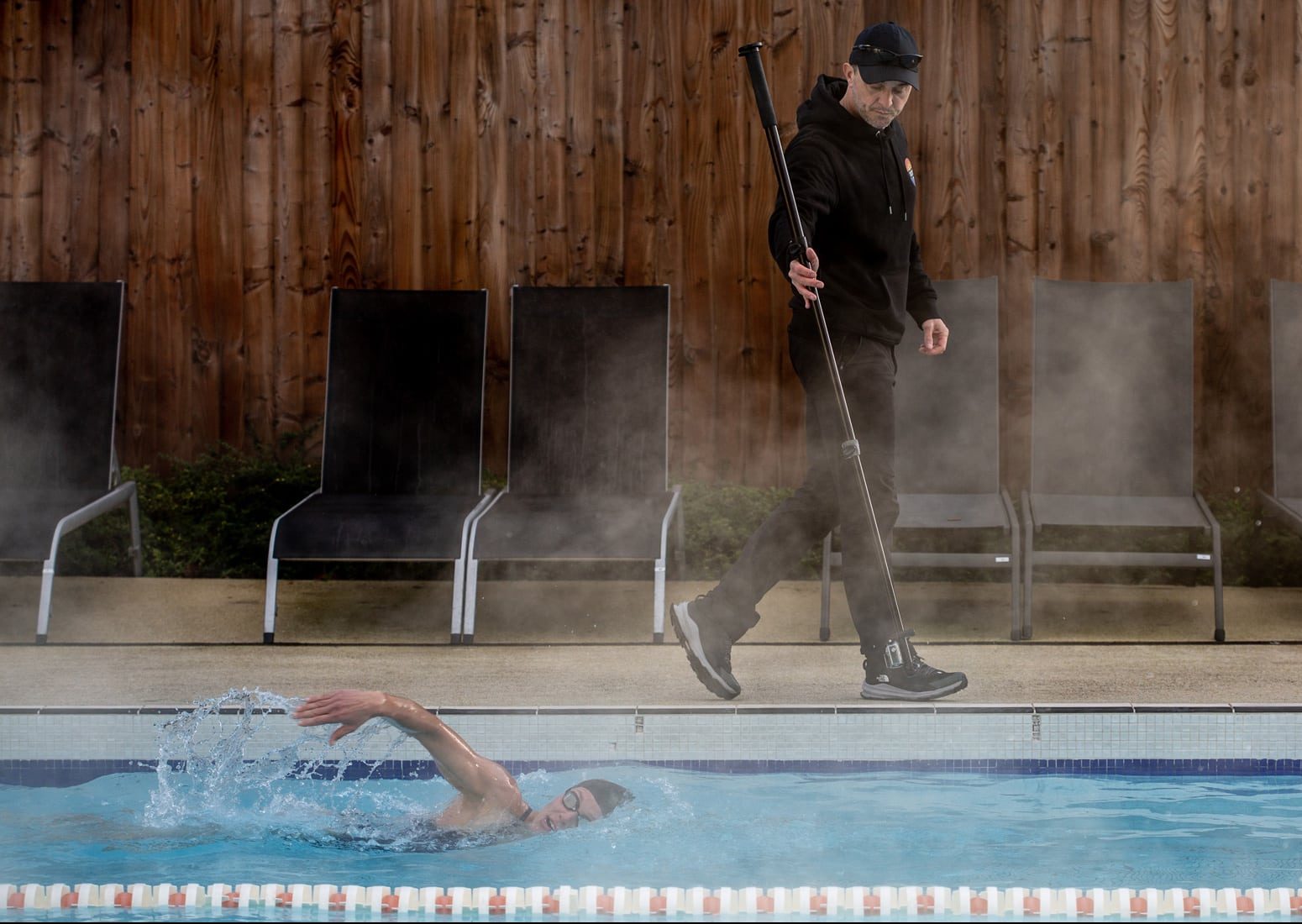If there is one technical element that is consistent right across the board with many of the world’s best swimmers, it’s good alignment. This is in stark contrast to how many of them look in the water. Technique even the highest of levels can look so different. Some look silky smooth and effortless, others can look more like windmills thrashing through the water. What is clear is that different strokes work for different folks and the reason for this is because all have:
- Different body types
- Different proportions
- Different breathing patterns
- Different levels of flexibility
- We also think differently
Despite all this the one key technical area that unlocks so many other parts of a swim stroke is good alignment. When you put this in place it can help improve so many areas of the stroke that might not be working as efficiently as it could. Without question this is the technical area that if you get it right gives you the biggest bang for your buck in return.
Unfortunately, this is the number one fault I see swimmers making on a daily basis.
What is good alignment?
The best way to think of alignment is how straight your body stays as you move through the water. This is particularly important when you extend forward. If you imagine two track lines coming out from your shoulders pointing directly down the pool, then these are the lines you are looking to extend along.
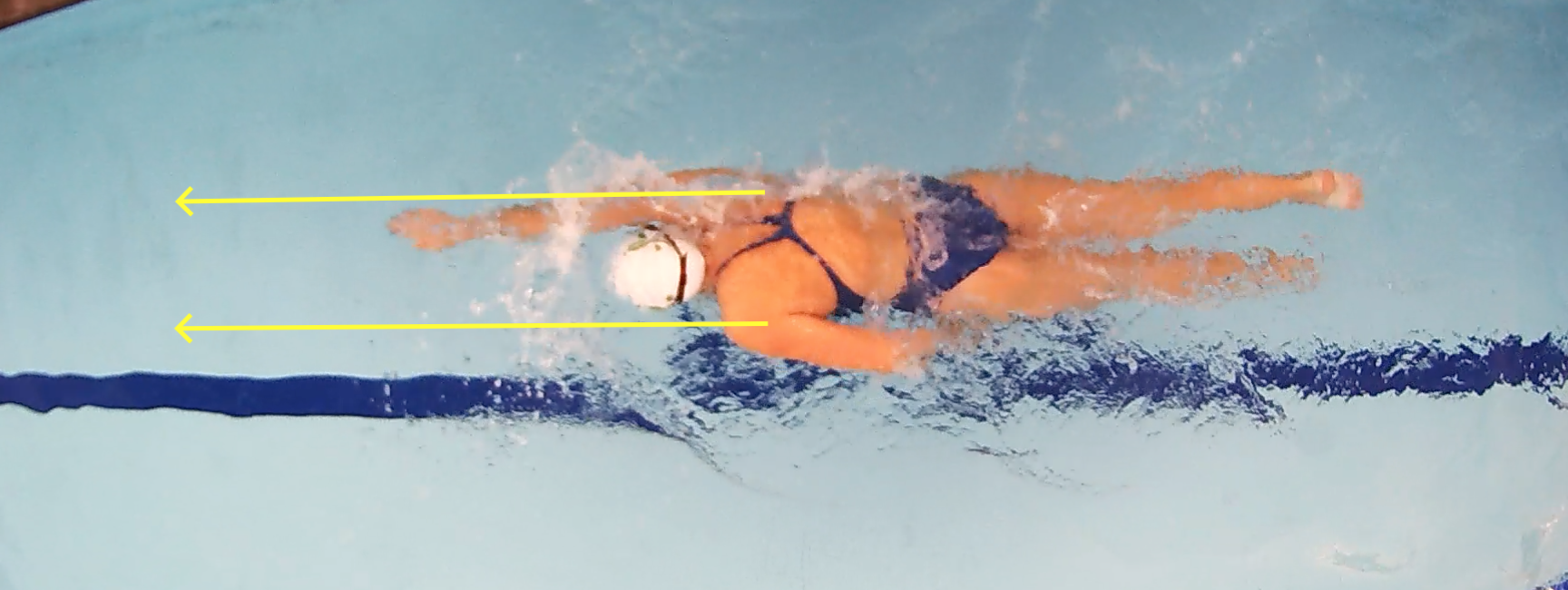
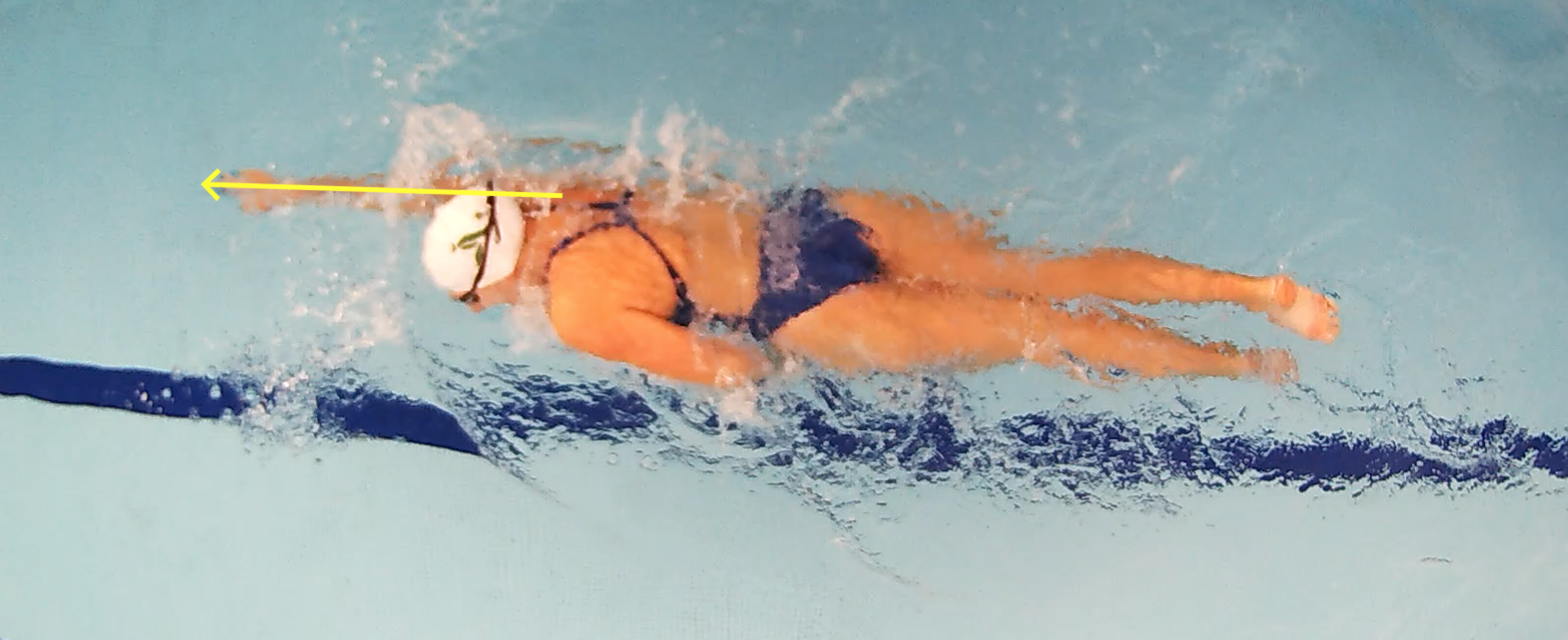 2-time Olympic gold medallist Rebecca Adlington demonstrating near perfect alignment
2-time Olympic gold medallist Rebecca Adlington demonstrating near perfect alignment
Unfortunately, many swimmers end up crossing over the centre line of the body as the arm extends forwards. Once the hand and arm cross this midline it creates an equal and opposite reaction in the legs and hips. This causes the body to ‘snake’ through the water. It can also result in a splayed leg kick as the body tries hard to stabilise itself.
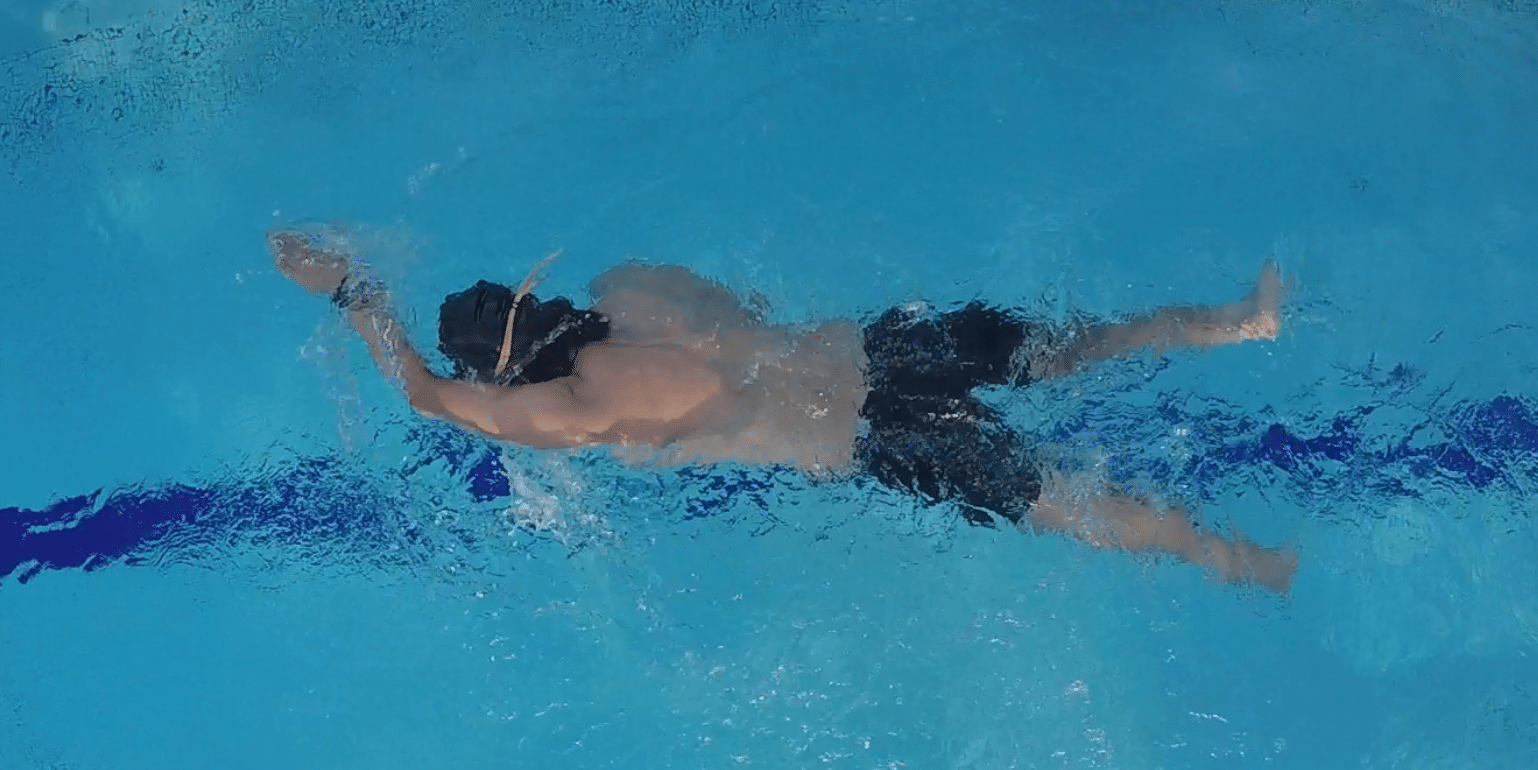
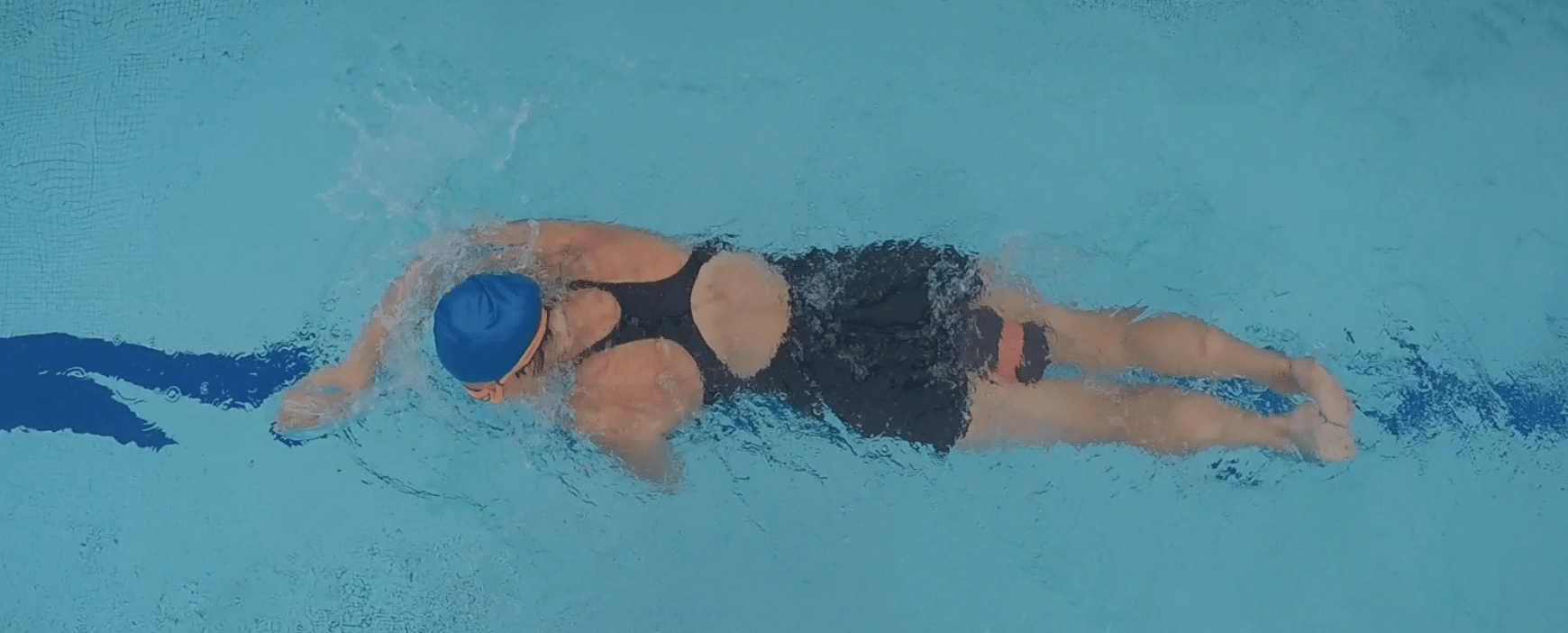
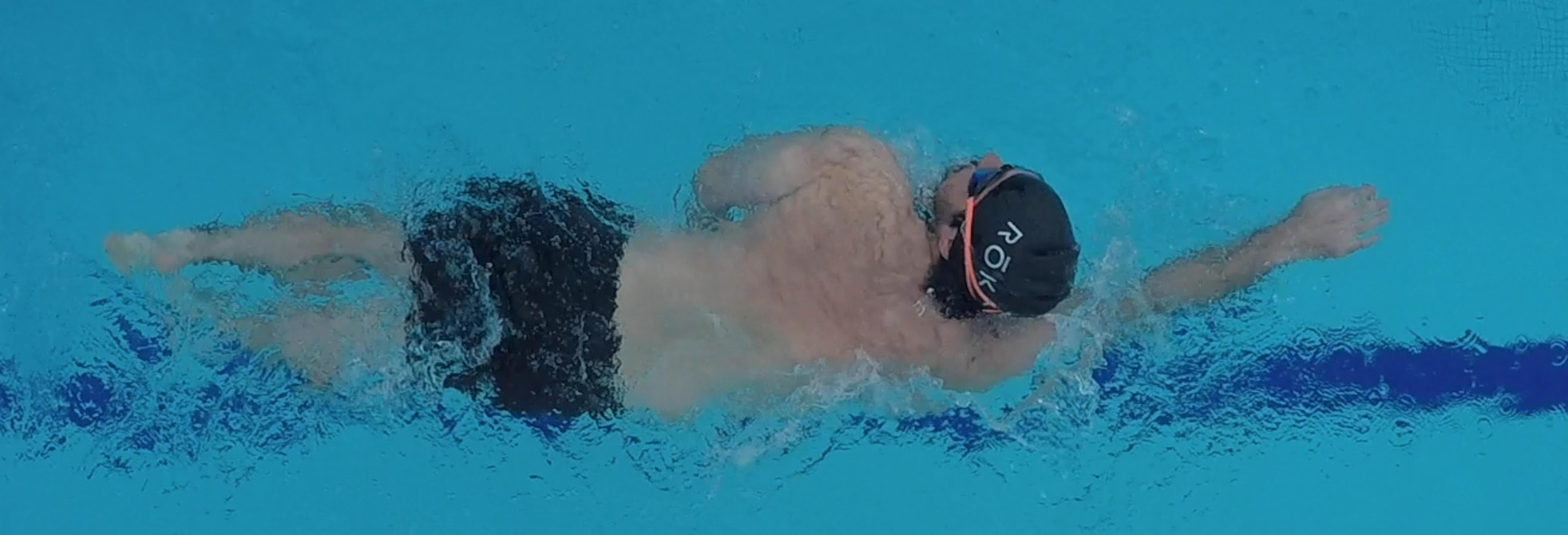
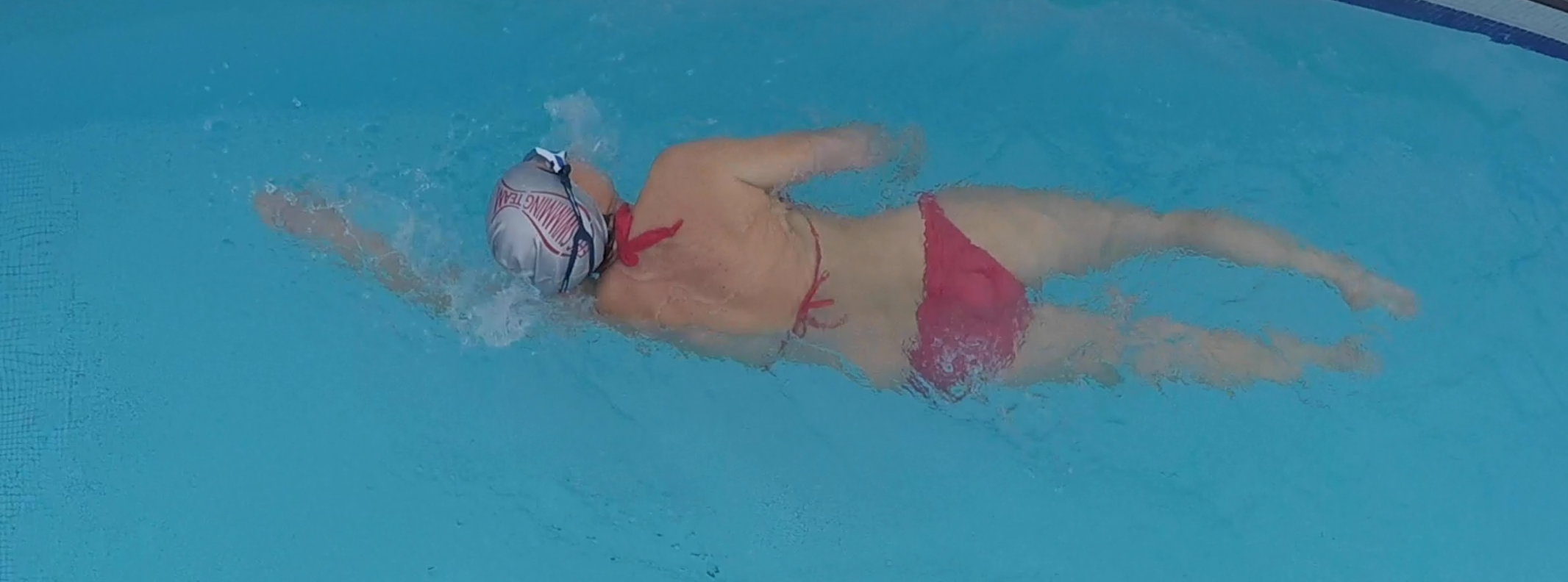
The thing all of the swimmers above have in common?
They all thought their arms were completely straight.
The main cause of poor alignment is two-fold:
1: Incorrect hand entry into the water. Usually too soon or close to the head.
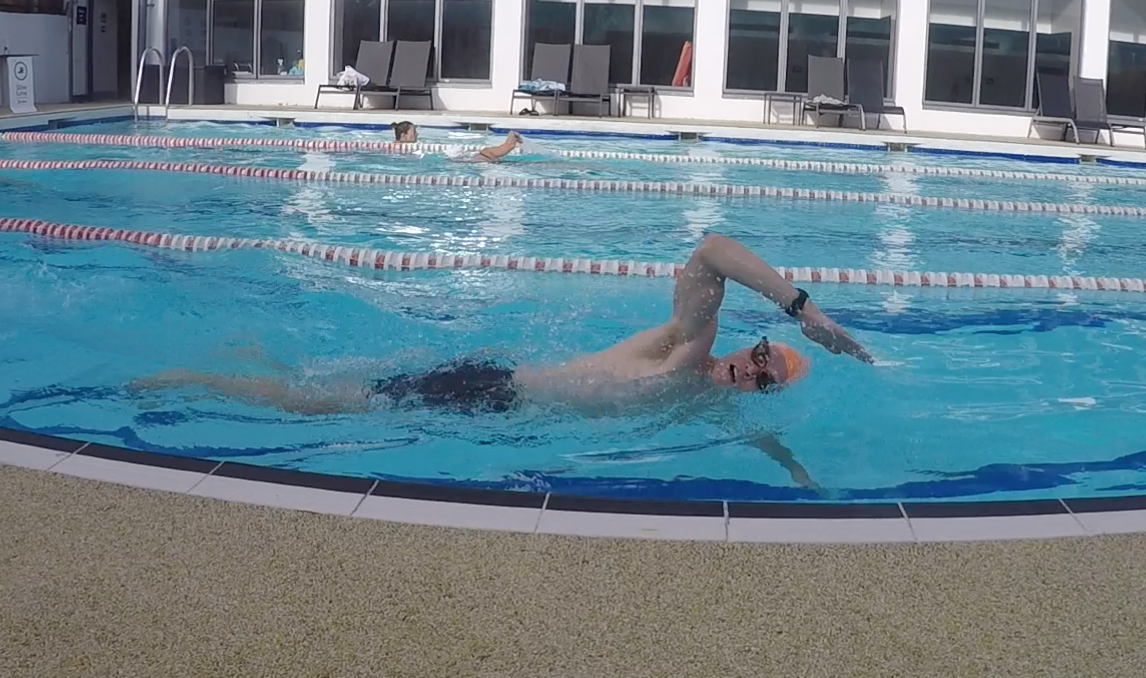

2: The arms start to follow the movement of the body from side to side as it rotates. Especially when the swimmer turns their head to breath in. In many cases allowing the extending arm to follow the movement of the head.
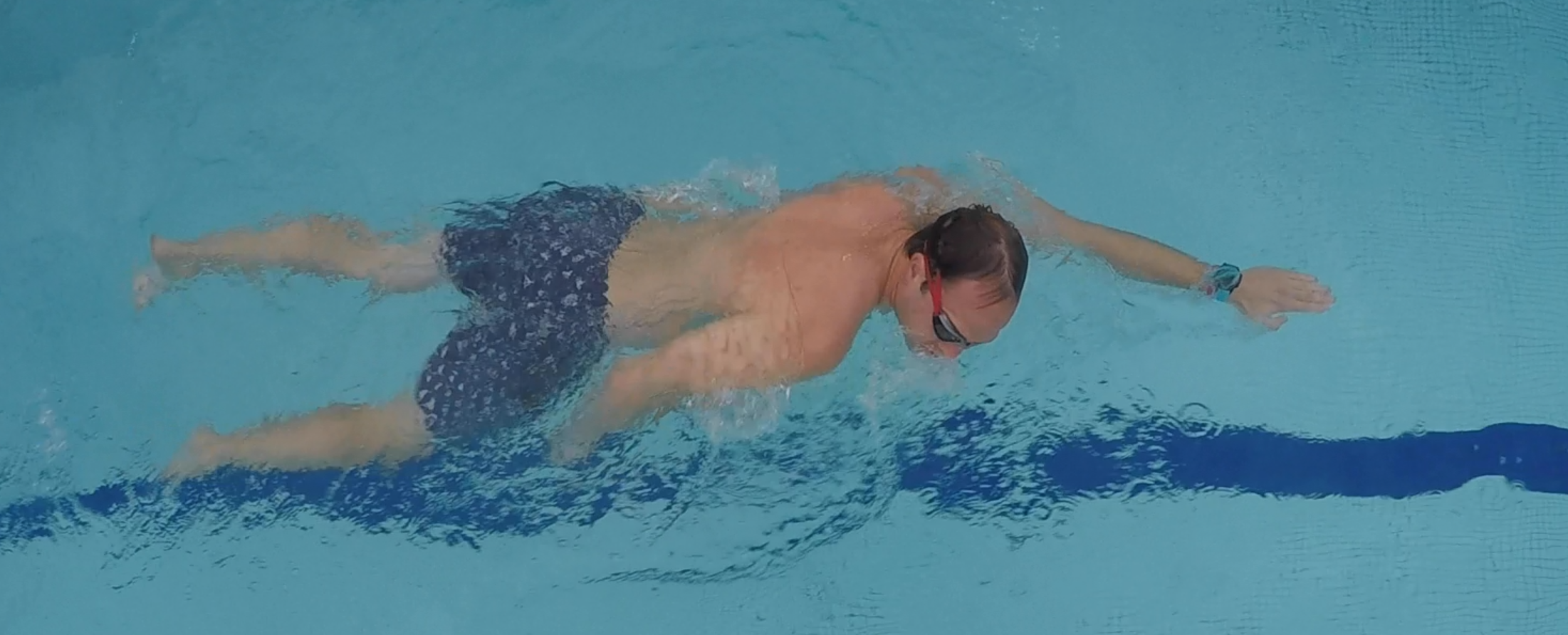
Quite often the swimmer will also be unable to swim in a straight line because of it.
The other major problem is this completely off sets your pulling pattern underwater. This leads to a much less affective catch & pull through. Quite often the swimmer will be so far offline above the water that the arm will cross over the midline under the water as well.
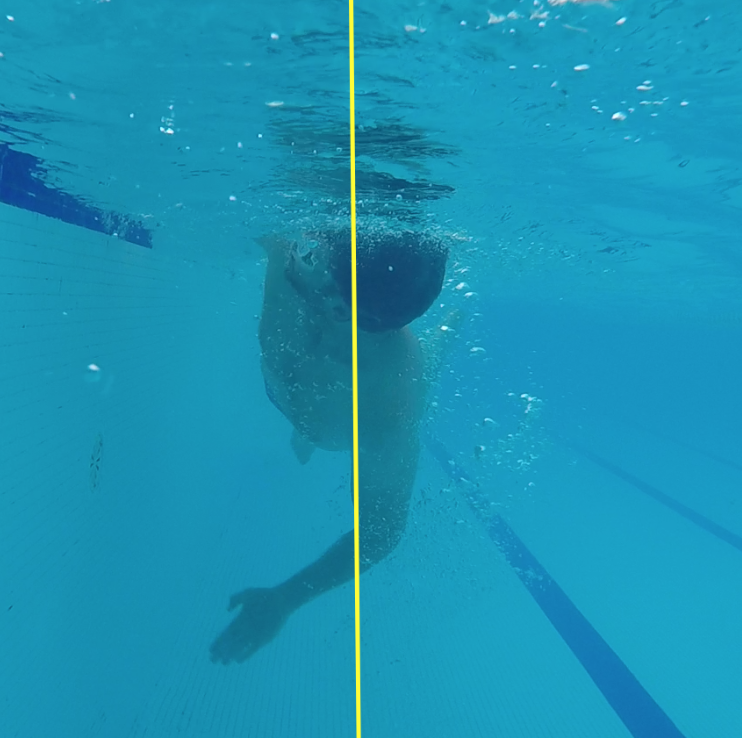
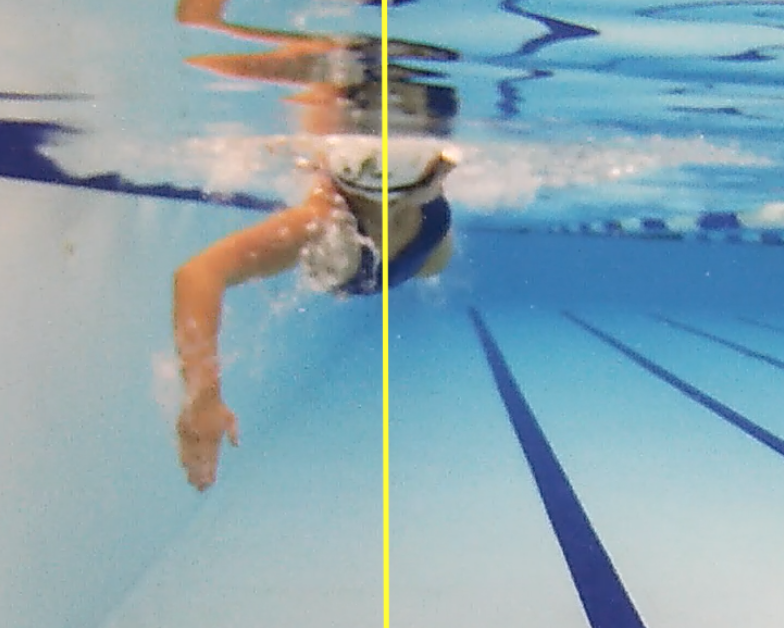 Rebecca Adlington demonstrating an ideal pulling position. This is much more stable & stronger
Rebecca Adlington demonstrating an ideal pulling position. This is much more stable & stronger
The key to unlocking an affective catch and pull through is to start with the alignment first. This massively improves the pulling position of the arms underwater without even having to think about it. In many cases there will be no need to make further adjustments to your pulling pattern. This is because it places the shoulder and arm in a stronger, more comfortable position for pulling backwards.
How do we do correct alignment?
Firstly, the swimmer needs to see the mistake they are making because very often they have no idea they are making this mistake in the first place. In fact, many are convinced their arms are straight. It never ceases to amaze me when I’m poolside how many swimmers are doing this. Next time you go to the pool start to watch other swimmers and you will start to see how common this issue is.
That’s why swim video analysis can be so powerful because swimmers are often astounded when they see what their body is doing. Once you realise you can’t believe what the brain is telling you it’s quite simple to correct but be warned! It might not feel good at first when you get it right. In fact, when you finally do get into the right position the arms usually feel way wider than you perceive them to be.
Ideally hand entry should be at least 3/4 arm length in front of the head or even further forwards. This added reach starts to straighten the arm. The closer your hand entry is to the head the higher the chance of you crossing inwards. This is because you close the angle of the extending arm, when ideally, we want to open it.
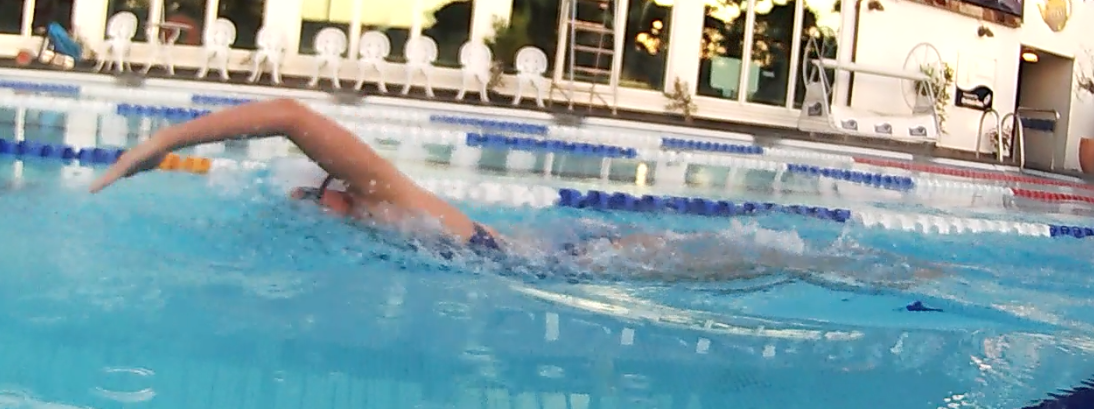

The next phase is to start to work on positioning your arms like the hands of a clock. Some swimmers will need to feel for 11am/1pm others 10am/2pm. In some extreme cases 9am/3pm when extending forwards to get this right.
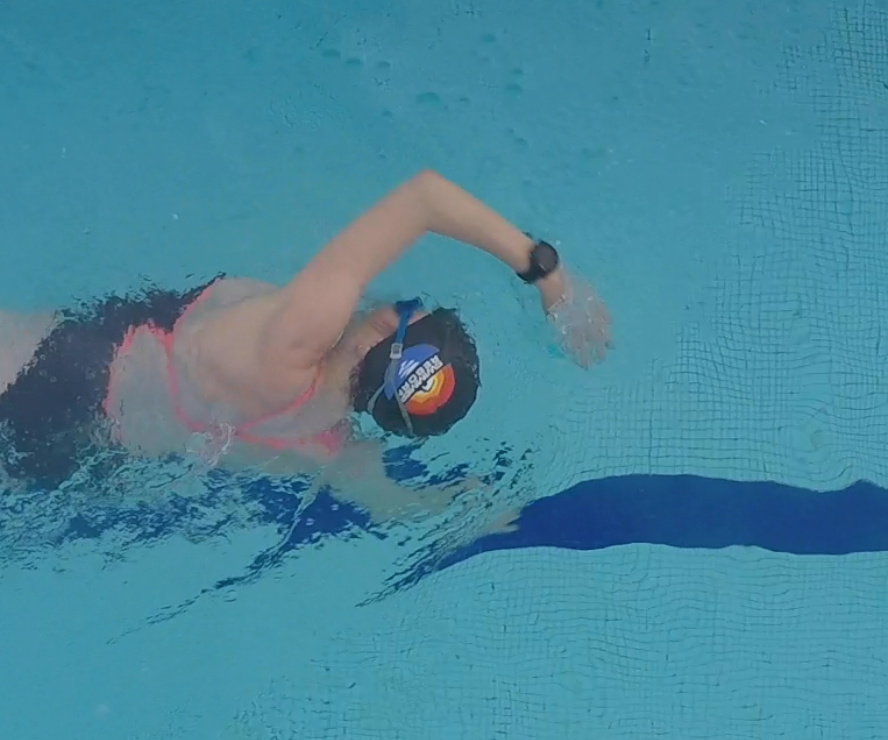
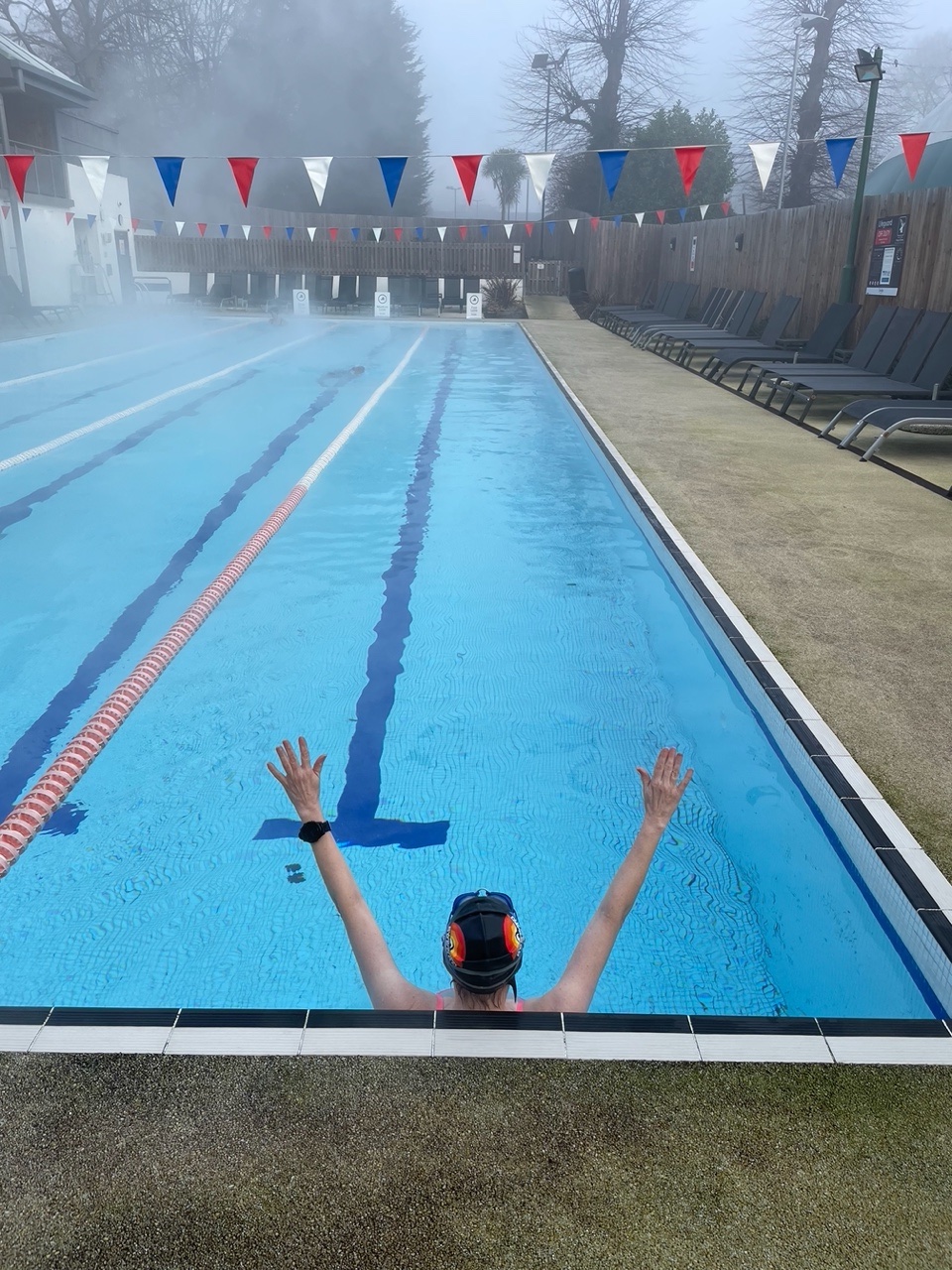 This is the position Michele had to imagine to correct the poor alignment you see above
This is the position Michele had to imagine to correct the poor alignment you see above
Sometimes this will need to be off set, especially if there is more crossing on one side compared to the other: 11am/2pm for example.
The response I get from every swimmer is “I can’t believe how wide it feels!” once we put them into the right position. This is because the previous position you thought was straight has been firmly embedded through thousands of repetitions. This creates strong muscle memory that needs to be unpicked.
Excessive crossing also takes longer to unpick. Worst cases scenario will take several sessions before it starts to feel more normal. If it’s only a subtle adjustment you might get it right after a session or two of focussed work. Then just add in sets as ‘reminders’ over time or when you are tired.
I’m not really a fan of doing ‘drills’ to correct this either, this can over complicate matters. Just be doing some full stroke swimming over shorts sets focussing on your specific “clock positioning” is enough. This can be done during a warmup before you hit your main set so you set up good technique from the moment you start swimming.
These sets need to be short to start with, think 50’s, 75’s 100’s. This makes it easier for the mind & body to cope with the initial change. Then you extended the distances with this new position over time as your body gets used to it.
A swimming snorkel is also an incredibly useful tool to help improve alignment. This is because you can look further forwards to see what your arms are doing while you are swimming. We use the snorkel extensively in my swim squads to focus on many different areas of the stroke. The elimination of breathing makes it so much easier to imprint good technique and movement patterns before reintroducing breathing as the next layer.
Another simple correction method is to swim over the black line in the swimming pool. This will help you get a good feel for the position of your arms. If they are coming onto across the black line, then you know you need to push them wider. As soon as you see the arms parallel with the outside of the black line then lock this is as it will be the position you are looking for.
Without question poor alignment is the number one issue most swimmers at all levels suffer from to differing degrees. It can easily be corrected with the right guidance. This is another reason why swimmers even at the highest of levels should get their strokes filmed at least once a year so they can make sure that they are not falling into bad habits.
